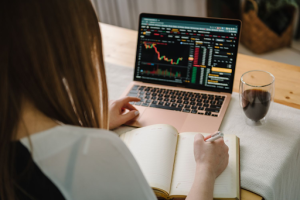Quantitative trading is an important factor of trading in which traders rely on statistical data to analyze the financial market and make decisions based on it. But the trends in quantitative trading are increasingly changing over time as new technologies like machine learning, data sciences, and artificial intelligence evolve in each field and make things simpler as compared to traditional ways. Now quantitative trading continuously changes because it redefines its boundaries and tries to create exciting opportunities and challenges for all traders, investors, and technologists alike. But what we can expect in the near future about quantitative trading and what will be the new trends we will experience in the future? Let’s see in detail.
The Rise of Machine Learning and AI in Trading
As we all know machine learning and AI are already utilized in the field of trading but now their role has become more important. Now, machine learning algorithms can assess huge amounts of financial data, detect all trends, and generate more accurate predictions. Then deep learning is a subset of machine learning that enables models to analyze complex datasets like news articles, tweets, and other unstructured data, to predict market movements. This feature is amazing and time-saving.
Trading techniques based on artificial intelligence are also becoming increasingly automated. Advances in natural language processing (NLP) and reinforcement learning have made it possible for artificial intelligence (AI) to recreate market conditions and learn from them without requiring human guidance. This capability for continuous learning and self-improvement is increasing the bar for algorithmic trading.
Quantum Computing: The Next Frontier
Quantum computing will also change quantitative trading in the future as it provides higher computational power that is more above that of traditional computers. Even if we talk about the present, still in its early phases, quantum computing has the potential to solve complicated optimization issues that are now beyond the capabilities of traditional algorithms. Quantum computing helps the traders to solve portfolio optimization problems more easily.
It also improves the ability to model market situations and handle the risk more effectively. Then quantum computers’ computing speed can minimize the time necessary for complicated computations, allowing for speedier trade execution and better arbitrage opportunities.
Big Data Analytics and Its Impact on Quantitative Trading
After artificial intelligence and machine learning, big data also enhances the abilities of quantitative trading. As many traders know, one of the biggest game changers in quantitative trading is the ability to efficiently analyze vast volumes of data. So big data analytics help traders to get all the meaningful information from large datasets. These datasets can contain traditional financial metrics as well as information from non-traditional sources such as consumer behavior patterns, social media sentiment, and satellite imagery.
Now traders do not rely on traditional data sources instead they utilize the latest ways and get a competitive advantage. For example, studying images from satellites to estimate store traffic or utilizing credit card transaction data to predict consumer purchasing trends. Due to this technique, traders can reduce the latency, improve their trading outcomes and can speed up their work.
The Growing Importance of ESG Criteria in Quantitative Models
ECG which is also known as environmental, social, and governance (ESG) is also becoming very popular for the investment of quantitative traders. The elements of ECG are included in the quantitative models to provide the facility to investors who want to match their portfolios with the right and ethical standards. According to ECG, the companies that score lower in the ECG indicator must have some legal, regulatory, and reputational issues. So ECG features can save you from the risks.
According to the research, the companies that utilize ECG as an important factor for their quantitative models and follow ECG’s strong policies can outperform their competitors for a long period of time.
High-Frequency Trading
A sort of automated trading known as high-frequency trading (HFT) makes quick transactions in response to market conditions by utilizing advanced algorithms. Recent years have seen a rise in the popularity of HFT because of the algorithms’ precision and speed.
In just a few moments, HFT algorithms can assess market data and execute transactions. This makes it possible for traders to benefit from slight price differences. Though a lot of transactions can be completed quickly due to the speed at which HFT algorithms work, this can also result in higher market volatility.
HFT has been criticized by certain regulators for giving some traders an unfair edge and for potentially causing market instability. On the other hand, some believe that by lowering spreads and boosting liquidity, HFT can really enhance market efficiency
Cloud Computing and Distributed Ledger Technology
Distributed ledger technology (DLT) and cloud computing are two more significant technological advancements that are changing the quantitative trading infrastructure. Cloud computing is an affordable and flexible resource for traders to process and store data. And DLT including blockchain provides a safe and reliable platform to execute and document trades. Cloud computing also helps traders adjust their operations according to their needs as well as lower expenses and increase their productivity. DLT also provides security features that lower the chances of fraud and make sure that the training data is 100% accurate. Moreover, cloud-based systems help teams to work together more efficiently and improve their communication as well. This is especially crucial for anybody looking for the best forex broker in the UAE because security and communication are important factors there.
Here are some other articles related to your search:





